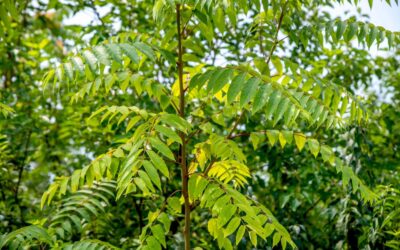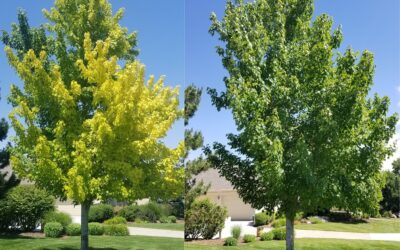No tree is more closely associated with Colorado than the quaking aspen. Covering 5 million acres, the aspen is the state’s only widespread native deciduous tree. Its heart-shaped leaves are ubiquitous, turning up in corporate logos, product labels, and signage. It even gave its name to one of the state’s most famous cities.
Thousands of people trek to the high country every fall to watch aspen leaves turn from green to brilliant gold, the first sign of winter’s imminent return.
It’s one of Colorado’s best-loved trees, but it is also one of the most misunderstood.
Aspens Can Be Finicky
A member of the willow family, the aspen is a high-altitude tree that thrives in cool, sunny, moist areas from 6,500 feet to timberline. This can be a source of frustration to Front Range homeowners who plant them in the region’s hot, dry environment.
Aspens also regenerate through sprouts or suckers that emerge from their roots as “volunteers” in potentially unwanted places. These suckers are clones of the parent tree that share the same root system, so when they’re removed, the parent’s root system is damaged and can lead to its early demise.
Many Generations of the Same Plant
This same cloning property is what makes the aspen succeed in its native habitat. Its underground root system survives forest fires and sends up shoots, making it one of the first plants to repopulate burn areas with groves of new trees that share the same roots.
Technically, they are all the same plant and can regenerate over thousands of years. The largest and oldest known aspen clone is the Pando clone that covers over 100 acres in southern Utah. Its age is estimated at 80,000 years, making it the oldest known living organism. Clones 5-10,000 years old are common.
Aspens Like Each Other, Too
Besides root sprouting, aspens reproduce sexually. Cotton-like male and female flowers, usually on separate trees, appear in early spring on 1-2-inch spikes called catkins and are pollinated by the wind. When seeds form, they are also spread by winds and germinate within a day or two if soil conditions are right. While seeding is important for genetic diversity, root sprouting is more common and successful.
Birds, Beavers and Bears are Fans
In the wild, aspens give habitat to a variety of wildlife. Its branches are home to cavity-nesting birds from songbirds and woodpeckers to birds of prey. Its thin, soft bark and numerous young shoots provide food for browsing animals like elk, moose, deer, and bears. And they’re a source of both food and construction materials for beavers.
Since they grow year-round, their thin photosynthetic bark with its green, sugary outer layer offers nutrition when other sources are scarce. Unfortunately, it also makes them vulnerable to pests and diseases, another headache that flatland homeowners can face.
Plants and People Like Aspens
Unlike dense conifers, the aspen’s open canopy lets sunlight reach the forest floor, leading to a lush understory of grasses, wildflowers, and shrubs that are both nice to look at and add to soil nutrients when they decompose.
A major commercial crop, its wood is soft but strong, flame resistant, and smooth, leading to some unique uses such as chopsticks and wooden matches. Its light weight and strength make it popular for making crates, pallets, packaging excelsior, and paper pulp. Because it doesn’t splinter easily, aspen is also popular for playground equipment and toys as well as in saunas and craft projects. Its lack of phenols that can cause respiratory problems makes it a favorite for animal bedding.
Aspen bark contains salicylates, the same compound found in aspirin, and has long been used as a pain reliever, and to treat skin conditions and frostbite. Aspen extracts are also used in cosmetics, pharmaceutical products, dyes, and food preservatives.
Aspens in the City
Aspens prefer the high country, but can be grown in urban areas as long as they’re carefully tended. Here are some dos and don’ts to keep your aspen healthy and happy.
- Maintain a proper watering schedule. Aspens are sensitive to both under- and over-watering
- Don’t use chemicals on sprouts. They’re connected to the parent tree. Cutting is OK, but can lower the parent tree’s life expectancy
- Keep string cutters and mowers away from the delicate trunk
- Trim out cankers before they reach half the trunk’s circumference
- Don’t let lawn sprinklers reach the leaves
- Clean up scale insect infestations before they spread
Properly chosen and maintained trees are an important investment that can add considerable value to both residential and commercial property. Aspens are the poplar’s country cousin and require extra care and attention to live in the city. If you need help keeping your aspen or any part of your landscape healthy, Donovan Arborists offers complete tree and lawn care services. Contact us today for a free estimate!



